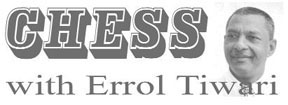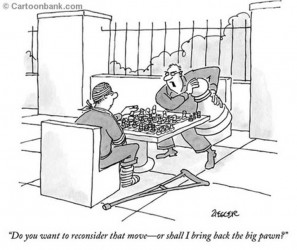Whilst the charismatic 23-year-old Norwegian chess grandmaster and world champion Magnus Carlsen was competing in the USA’s Sinquefield Cup two weeks ago, India’s Vishy Anand was winning the Bilbao Masters Final simultaneously on the other side of the world, in Spain. The two grandmasters are fervently fine-tuning their preparations for their return world championship title clash in November. Anand lost the title in November 2013 in his hometown of Chennai, India.
Carlsen is the highest-rated player in chess history, achieving the elusive 2,800 mark when hardly anyone else had done so. Garry Kasparov was there before him, but Carlsen eventually surpassed Kasparov’s record and stands alone at the very top of the chess spire with an impressive 2,870 points. Anand is ranked sixth in the world of chess grandmasters. However, he has not yet broken into the magical 2,800 circle representing the elite of grandmasters. He stands at 2,775 points. Carlsen defeated the 43-year-old Anand in last year’s world championship title match by securing three wins and seven draws. However, ten months after his defeat, Anand continues to demonstrate an immeasurable ability to win tournaments. He has been beating competitors ranked higher than himself. It makes his impending title match with Carlsen potentially exciting.
the 43-year-old Anand in last year’s world championship title match by securing three wins and seven draws. However, ten months after his defeat, Anand continues to demonstrate an immeasurable ability to win tournaments. He has been beating competitors ranked higher than himself. It makes his impending title match with Carlsen potentially exciting.
But Carlsen will be difficult to beat. His biographers have dubbed him “the hero of the computer era.” Computers influence us so much that the top human players are now the ones who most often play the moves that would be chosen by the best computer engines, which sport names like HIARCS, Houdini, Rybka, and recently, Stockfish. In a study published last year by one of the world’s leading chess websites, Chessbase, Carlsen played more like a computer than any one of his opponents during 2013. Players have learned from computers that certain kinds of chess positions are playable, or advantageous, even though they might violate general principles. Having seen how machines go about attacking, and especially defending, humans have become emboldened to try the same ideas. When engines suggest surprising moves, or arrangements of pieces that look ‘ugly’ to human sensibilities, they are often seeing more deeply into the game than their users. But still, those engines are not perfect; sometimes long-term strategy still eludes them. It makes us wonder at the vastness and volume of the capacity we enjoy as humans.

In Guyana, we are known as a people who excel at academia, and who overcome the challenges of examinations by passing with distinction. So why are we a mediocre chess nation? The question requires careful analysis. When the first international rating list was published in 1971, Bobby Fischer was the only player rated above 2,700. In chess ratings, a 100 point advantage corresponds to an almost two-thirds chance of winning a match. Fischer went on to crush Boris Spassky in their celebrated world championship match of 1972. In 1974, there were only two players with 2700 ratings, Fischer and his successor Anatoly Karpov. By 1997, there were only eight persons who had reached and overcome the 2,700 mark. Interestingly, during 1997, Kasparov faced the International Business Machines Corporation’s (IBM) Deep Blue, the strongest chess computer programme at the time, in New York city. Some observers saw that battle as a historic test for human intelligence. The outcome could be seen as an “early indication of how well our species might maintain its identity, let alone its superiority, in the years and centuries to come,’’ wrote Steven Levy in a Newsweek cover story titled ‘The Brain’s Last Stand.’ But after Kasparov lost to Deep Blue in dramatic fashion, amateurs did not throw away their chess sets, and professionals did not switch careers. Instead, chess went back to the way it was before, with a difference. Computers allowed players to search for patterns and the weaknesses of their opponents. After Deep Blue, elite grandmasters used computers to test their opening plans and generate new ideas. Computers had developed the extraordinary ability for calculating millions of moves per second. It was awesome. Human chess skills have been complemented and augmented by chess computers, not replaced by the more (intelligent?) machines. Machines have enabled chess to become more popular among children and adults alike. With the help of computers, there are some 1,500 grandmasters today, more than twice the number as in 1997, and they come from 80 countries. Twenty-two of them earned the title before reaching the age of 15. The net effect of the gain in computer skill is thus, ironically, a gain in human skill.
With respect to our fellow Guyanese, I urge the junior chess players to continue practising in preparation for the National Junior Championships (two tournaments) which are coming up in due course. The juniors may be fortunate to have a points system method introduced.








